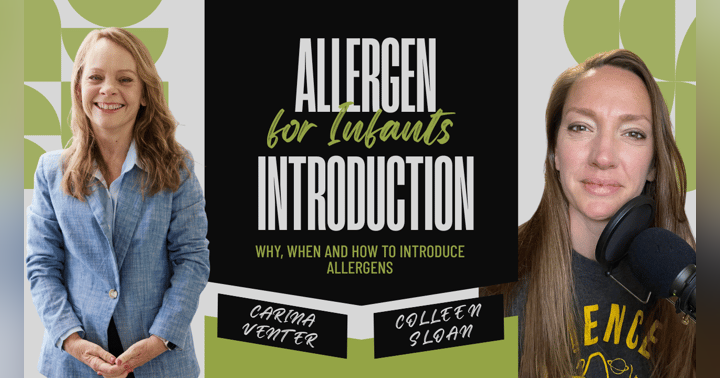Not All Eating Disorders are Textbook

When I was in PA school, we learned to spot a classic eating disorder patient.
The clinical scenarios typically described a Caucasian, teen girl with a ballet bun and a BMI below 17.
But what about the 9-year-old labeled as a “picky eater” who’s dropped off the growth curve?
Or the 40-year-old who only eats “clean” but has brittle nails and chronic bloating?
In this week’s episode, I sat down with eating disorder dietitian Johnna Hartenstine to challenge the mental picture we’ve all been trained to hold—and to teach us how to screen smarter and refer sooner.
If this sounds like you ... “I don’t want to say the wrong thing… but something’s not right,” ... you're going to love this episode.
💬 What drives disordered eating—beyond hunger and calories Johnna reminds us that food is tied to connection. From birthday cake memories to family dinners, disruptions in early feeding relationships often fuel later struggles.
🤔 What clues you might be missing Dry lips, brittle hair, dull skin, persistent bloating, slow height growth, or even petechiae—these seemingly minor signs might be your first clue that something’s off. Don’t ignore them.
🧠 Helpful questions to ask when something seems off:
-
“How long have you been eating this way?”
-
“What do you like about these foods?”
-
“What do meals look like during the day?”
-
“Have there been any food-related fears or recent changes?”
These simple questions can uncover safe foods, restrictive routines, or emotional drivers that patients often don’t think to share.
🔍 Not all eating disorders look the same Yes, there’s the underweight teen athlete. But Johnna also treats patients in average or larger bodies, adults who overexercise, and even a blind woman in her 60s who feared weight gain! Proof that it's not always about body shape and size.
The point? Disordered eating isn’t always visible. And patients often say, “But I don’t look like I have an eating disorder.”
Johnna stressed the importance of referring to a Registered Dietitian who specializes in Eating Disorders. But I asked her a question all clinicians struggle with ...
Where do I find one!?
She suggests you start here:
-
A simple Google search for Eating Disorder Registered Dietitian near me can also work
🤯 We also unpack ARFID
ARFID isn’t just extreme picky eating Avoidant Restrictive Food Intake Disorder (ARFID) is often missed because it doesn’t include body image concerns. Johnna breaks down the 3 subtypes:
-
Sensory-based avoidance (textures, smells)
-
Lack of interest in food
-
Fear-based avoidance (e.g. choking or allergic reaction)
One key sign? Suppressed height in addition to weight. If a child’s growth has slowed, dig deeper than just “they’ll grow out of it.”
Then I asked a question many of us want to know
So…what does treatment actually look like? Johnna gives us an inside look at treatment levels:
-
Inpatient: For medical instability (think CV issues, refeeding risk, tube feeding needed)
-
Residential: Round-the-clock support without hospitalization
-
Partial hospitalization (PHP): Like day camp, but with supervised meals and therapy
-
Outpatient: Often includes a dietitian + therapist, sometimes with a harm-reduction model
And recovery? It’s not a “check-all-the-boxes” finish line. It’s individualized, nuanced, and ongoing.
Lastly we had a great conversation about ‘healthy eating’—is that phrase actually helpful? Johnna challenges us to reframe it: 👉 “What’s helpful eating for this patient?”
Whether it's Rice Krispies before soccer or oral nutrition shakes during recovery, context matters more than dogma.
And for those who struggle with overeating? It’s still about helpfulness—not shame. Structure, satiety, and support are more effective than rules or restrictions.
👂Listen to this episode if:
-
You’ve ever brushed off a small kid as “just picky”
-
You feel unsure what eating disorder recovery really looks like
-
You’re curious about ARFID and how to spot it early
-
You want to be a more compassionate, informed provider when discussing disordered eating
Click here to listen to this episode!
🎧 And if you want even more insight... Check out Episode 41: Silent Battles, where a brave, young woman shares her journey from secrecy to recovery in her own words.
🩺 Clinician to clinician: Have you seen a patient lately who “didn’t quite add up”? Maybe it’s time to look closer.
Let me know your biggest takeaway from this episode.






